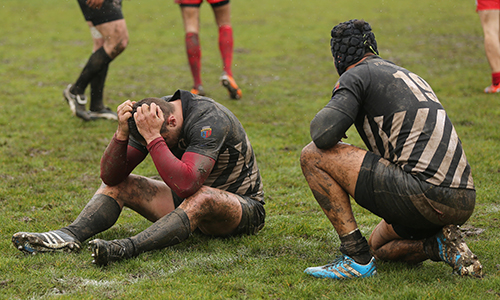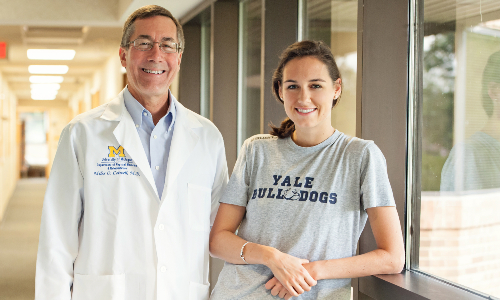RESOURCE CENTER
What is a Concussion?
What is a concussion?
A concussion is a type of traumatic brain injury, or TBI, caused by a bump, blow, or jolt to the head or by a hit to the body that causes the head and brain to move rapidly back and forth. Rapid movement causes brain tissue to change shape, which can stretch and damage brain cells. This damage also causes chemical and metabolic changes within the brain cells, making it more difficult for cells to function and communicate. Since the brain is the body’s control center, the effects of a concussion can be far-reaching.
Concussions are usually not life-threatening, but the effects of a concussion can change a life and the injury should be treated seriously.
Signs and symptoms of a concussion
The signs and symptoms of a concussion are incredibly important because a concussion doesn’t show up on imaging like an X-ray, CT, or MRI scan and there is no objective test, like drawing blood or saliva, that can determine if a patient has a concussion. A doctor makes a concussion diagnosis based on the results of a comprehensive examination, which includes observing signs of concussion and patients reporting symptoms of concussion appearing after an impact to the head or body. Concussion signs and symptoms are the brain’s way of showing it is injured and not functioning normally.
Concussion signs are what someone could observe about you to determine if you have a concussion. Signs of a concussion range from obvious to much more nuanced, but even one sign of a concussion after a hit to the head should be reported to a medical professional.
Concussion signs include:
- Problems with balance
- Glazed look in the eyes
- Amnesia
- Delayed response to questions
- Forgetting an instruction, confusion about an assignment or position, or confusion of the game, score, or opponent
- Inappropriate crying
- Inappropriate laughter
- Vomiting
- Loss of consciousness
Concussion symptoms are what someone who is concussed will tell you they are experiencing. When responding to a possible concussion in a child, remember that a concussed child may not be able to clearly communicate the symptoms they are experiencing because of their age and limited vocabulary, and the fact that they have just experienced a brain injury. Concussion symptoms typically fall into four major categories:
1. Somatic (Physical) Symptoms
- Headache
- Light-headedness
- Dizziness
- Nausea
- Sensitivity to light
- Sensitivity to noise
2. Cognitive Symptoms
- Difficulties with attention
- Memory problems
- Loss of focus
- Difficulty multitasking
- Difficulty completing mental tasks
3. Sleep Symptoms
- Sleeping more than usual
- Sleeping less than usual
- Having trouble falling asleep
4. Emotional Symptoms
- Anxiety
- Depression
- Panic attacks
Note: This is not an exhaustive list of concussion signs and symptoms, and it may take a few days for concussion symptoms to appear after the initial injury.
Click here for an easy-to-read list of concussion signs and symptoms.
|
Image

|
Concussion can lead to mental health symptoms in young people. A review of several studies found that among children and adults, concussion is associated with an increased risk of self-harming behaviors compared with those without such diagnosis. Click here to learn more.
A common injury
There are about 3 million TBI-related emergency department (ED) visits, hospitalizations, and deaths in the United States each year. The leading cause of all TBI-related ED visits is falls, which accounts for 48% of visits. The second-leading cause, with 17%, is being struck by or against an object. Injuries from a variety of sources – including accidents, abuse, blast exposure and many more – can cause concussion.
One of the leading causes of concussion, of course, is sports. The CDC estimates as many as 3.8 million concussions occur in the U.S. annually through sports and recreational activities. However, only a fraction of sports concussions are recognized by athletes, coaches, and parents, and treated by medical professionals.
Concussions can occur in any sport, during practice or competition. In fact, according to a 2019 study by the Journal of Pediatrics, 36% of all diagnosed high school sport concussions occurred during practice, with cheerleading being the only sport with a higher rate during practice than competition.
Teenagers are especially vulnerable to concussion. A 2017 survey of teenagers by the CDC found that 2.5 million teenagers experienced a concussion in a sport or recreational activity, and 1 million teenagers reported two concussions in the previous year.
Immediate concussion response: Consult a medical professional, and rest up
For most concussions, simply resting and gradually returning to activity under the guidance of a medical professional clears up concussion symptoms in a matter of days or weeks. This is the current standard of care and has helped countless concussion patients through a full recovery. Visit our Concussion Response page to learn about the five key steps to take immediately after a concussion.

Complex recovery: Post-Concussion Syndrome
Recovering from concussion means your brain cells must return to the normal function by rebalancing levels of chemicals, like sodium and calcium, inside and outside of the cell. This process takes a lot of energy, so it is important to conserve energy during recovery. When properly managed, the majority of concussion symptoms will resolve within a couple of weeks, however over-exertion of brain cells during recovery can cause symptoms to persist for months or even years. A significant percentage (estimates vary between 10% and 30%) of concussion patients suffer from extended recovery, known as Post-Concussion Syndrome (PCS). Learn more about PCS, including coping advice and treatment options, in our Resource Center.
Catastrophic re-injury: Second Impact Syndrome
During recovery, the brain is more vulnerable to re-injury. In rare cases, a second concussion sustained during recovery can cause the brain to undergo massive swelling. This extremely rare condition is known as Second Impact Syndrome (SIS). Approximately half of SIS patients die from their injuries, and the survivors often suffer from life-long disability.
Read the heartbreaking story of Rowan Stringer to learn about a young athlete who lost her life to SIS.
A preventable epidemic
The good news is we can stop concussions before they happen. There are many opportunities to reduce concussions through smart policy decisions. Research has shown more than half of all head impacts and concussions in football occur during practice. In middle school soccer players, there are 100,000 concussions caused by heading every three years. The Concussion Legacy Foundation has led the movement to reduce hitting in football practices at the youth, college and professional levels. Our Safer Soccer campaign led to a rule change in soccer that prohibits players 10 and younger from heading the ball and reduces headers for 11 to 13-year-old players. There is still a lot to do to make sports safer for all athletes and the Concussion Legacy Foundation will continue to be on the forefront of research and education.
You May Also Like

How you respond to a concussion can make all the difference in how you recover. Learn the five steps experts recommend you take after concussion.
Concussion Response
Finding a doctor who understands concussion is key to managing your injury. Learn how to seek out the best care and when to try active treatments for concussion.
Concussion Treatments